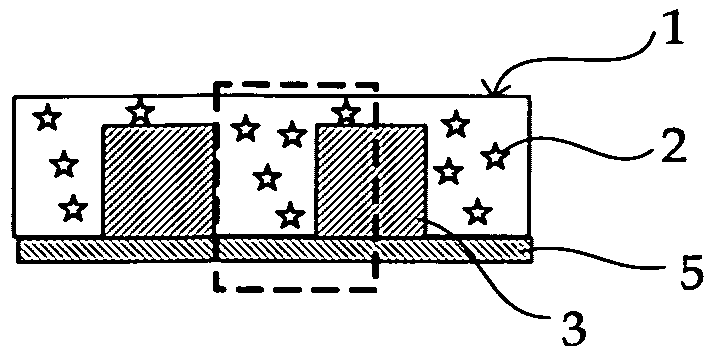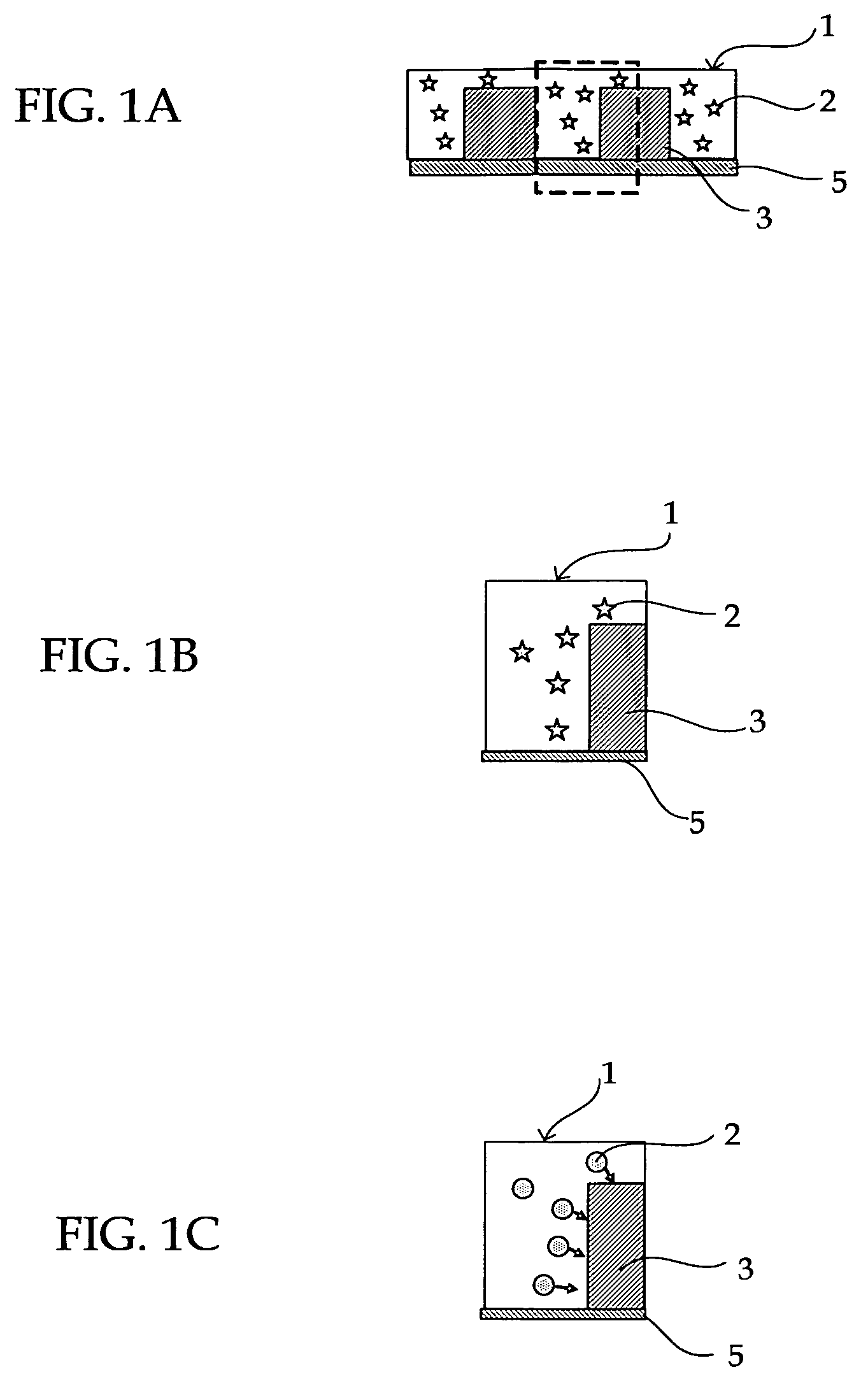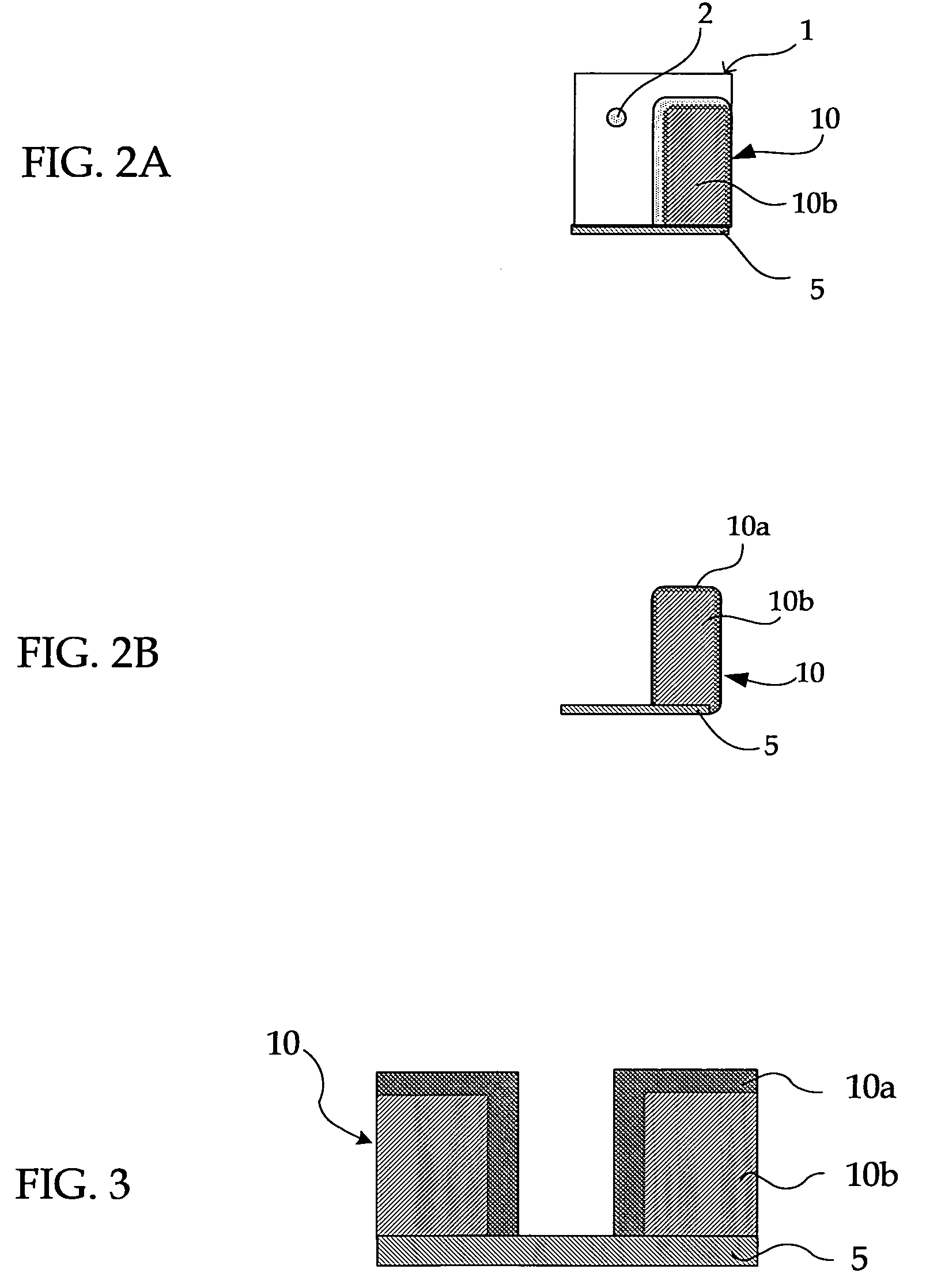Resist pattern thickening material and process for forming resist pattern, and semiconductor device and process for manufacturing the same
a technology of resist pattern and thickening material, which is applied in the direction of photosensitive materials, instruments, photomechanical equipment, etc., can solve the problems of difficult development of new resist materials suitable for exposure light with short wavelengths, difficulty in controlling the thickness of resist patterns, and difficulty in improving exposure devices. , to achieve the effect of good thickening effect, easy control of the thickening amount of resist patterns, and easy and precise formation
- Summary
- Abstract
- Description
- Claims
- Application Information
AI Technical Summary
Benefits of technology
Problems solved by technology
Method used
Image
Examples
example 1
—Preparation of Resist Pattern Thickening Material—
[0197]Resist pattern thickening materials A through M having compositions shown in Table 1 were prepared.
[0198]Note that in Table 1, the “thickening material” means a resist pattern thickening material, and “A” through “O” correspond to the resist pattern thickening materials A through O. Of the resist pattern thickening materials A through O, the resist pattern thickening material O corresponds to comparative example and the resist pattern thickening materials A through N correspond to examples (of the present invention).
[0199]And “solubilizer” corresponds to the solubilizer which melts the resist pattern at the temperature near its melting point.
[0200]In “water-soluble element” column, “KW-3” is a polyvinyl acetal resin (manufactured by Sekisui Chemical Co., Ltd.), “K-30” is a polyvinylpyrrolidone resin (manufactured by Nippon Shokubai Co., Ltd.), “cellulose resin” is manufactured by Polysciences, Inc., “tannic acid” is manufactur...
example 2
—Resist Pattern Forming—
[0205]Using a KrF resist (“DX5160P” manufactured by AZ Electric Materials), a hole pattern having film thickness of 400 nm and opening diameter of 250 nm was formed. And on the hole pattern, prepared resist pattern thickening materials A, D through I and O were coated by spin coating to have a thickness of 150 nm, first under the condition of 1,000 rpm / 5 s and then under the condition of 3,500 rpm / 40 s. Thereafter, baking was carried out under the condition of 110° C. / 60 s for the resist pattern thickening materials A, D, E, G through I and O and 125° C. / 60 s for the resist pattern thickening material F. Then, the resist pattern thickening materials A, D through I and O were rinsed for 60 seconds with pure water and unreacted portions with no interaction (mixing) were removed to develop the resist pattern thickened by the resist pattern thickening materials A, D through I and O, respectively. Thus, thickened resist patterns were formed.
[0206]The reduction amo...
example 3
[0214]As shown in FIG. 9, an interlayer dielectric film 12 was formed on a silicon substrate 11 and as shown in FIG. 10, a titanium film 13 was formed on the interlayer dielectric film 12 by sputtering. Next, as shown in FIG. 11, a resist pattern 14 was formed by known photolithographic technique. By using the resist pattern 14 as a mask, the titanium film 13 was patterned by reactive ion etching to form an opening 15a. Reactive ion etching was continuously carried out to remove the resist pattern 14 and at the same time, as shown in FIG. 12, opening 15b was formed in the interlayer dielectric film 12 by using the titanium film 13 as a mask.
[0215]Next, the titanium film 13 was removed by wet processing and as shown in FIG. 13, a TiN film 16 was formed on the interlayer dielectric film 12 by sputtering. Subsequently, a Cu film 17 was grown by electrolytic plating on the TiN film 16. Next, as shown in FIG. 14, planarizing was carried out by CMP as such that the barrier metal and the C...
PUM
| Property | Measurement | Unit |
|---|---|---|
| melting point | aaaaa | aaaaa |
| melting point | aaaaa | aaaaa |
| wavelength | aaaaa | aaaaa |
Abstract
Description
Claims
Application Information
 Login to View More
Login to View More - R&D
- Intellectual Property
- Life Sciences
- Materials
- Tech Scout
- Unparalleled Data Quality
- Higher Quality Content
- 60% Fewer Hallucinations
Browse by: Latest US Patents, China's latest patents, Technical Efficacy Thesaurus, Application Domain, Technology Topic, Popular Technical Reports.
© 2025 PatSnap. All rights reserved.Legal|Privacy policy|Modern Slavery Act Transparency Statement|Sitemap|About US| Contact US: help@patsnap.com



